

Singing Technique: Speech Level Singing vs Estill vs Complete Vocal Technique
I’m fond of saying that for every voice teacher, there is a different singing technique.
At conferences, in hallways and in the studio, voice teachers are always thinking of new approaches to working with the voice.
But while there are many ways to teach singing, there are a few incredibly popular singing techniques that tend to produce results.
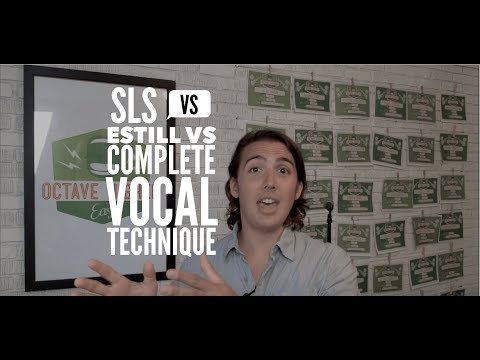
The best part?
Many of these singing techniques have been around for a while. Which means that by doing a bit of research, you’ll see which of these vocal techniques might help you achieve your goals quickest.
The truth is that different voice techniques are good for different things.
While I’d love to discuss all the amazing singing techniques and voice teachers out there, I decided to focus on the 3 most popular voice techniques for singing contemporary commercial music.
The 3 Most Popular Vocal Techniques Explained
Let’s discuss the 3 most popular vocal techniques: Speech Level Singing , Estill Voice Training and Complete Vocal Technique . Then we can talk about what each technique is good for.
Just a head’s up:
I’m not a representative of these vocal techniques. I’m just a voice teacher that is always looking to produce results in his students.
Additionally, there is so much jargon in voice training, I’ve tried to explain each of these techniques in plain English whenever possible.
First, we’ll give a bit of background of each technique. Then we’ll discuss some of the hallmarks of each singing technique. Finally, we’ll talk about the end goal of training and how it may align with your goals as a singer.
Let’s get into it!
1. Speech Level Singing Technique
The scoop on speech level singing.
Speech Level Singing (SLS) is a singing technique pioneered by Seth Riggs, a classically educated vocal coach living in Los Angeles.
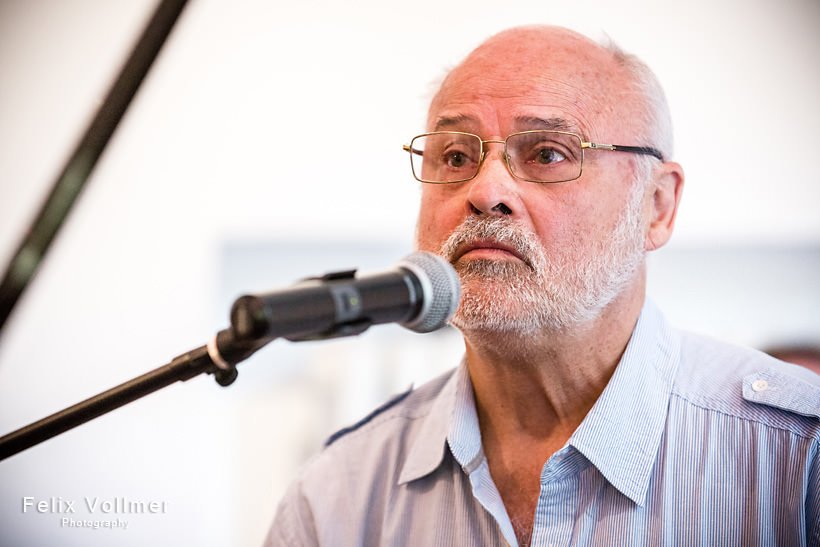
Riggs’ inspiration for creating Speech Level Singing came from his studies of the Schola Cantorum and Bel Canto era of singing while getting a master’s degree in opera theatre.
Both the Schola Cantorum and Bel Canto (meaning “beautiful singing”) were Italian schools of singing in an era when the church set the bar for all singing in Europe.
Bel Canto refers to this era when beautiful singing was the standard and reinforced in every church across Europe.
After graduating, Riggs began to wonder why contemporary music did not align with the aesthetic standards of the Bel Canto era. Three years later, Seth began teaching singing in Los Angeles.

Dissatisfied with how singing was being taught at the university level, Riggs focused primarily on instructing private singing lessons. He then created a system of teacher training to develop other teachers inspired by the vocal ideals of Bel Canto . This organization was called Speech Level Singing .
What is Speech Level Singing Technique?
Speech Level Singing is a vocal technique that aims to achieve a balanced registration or mix while keeping a resting larynx .
What does all that mean?
Here’s the bottom line:
Speech Level Singing believes that when you speak, there is no tension or manipulation in your voice because your motive is to communicate with others. The same should be true when you are singing.

When a singer is singing from the bottom to the top of his/her voice, there is often an audible “break” or “disconnect” into falsetto . SLS holds that this break happens due to the strain of joining different vocal registers.
A register is a sequence of notes that share a consistent sound along with a similar, accompanying muscular coordination such as chest voice or head voice .
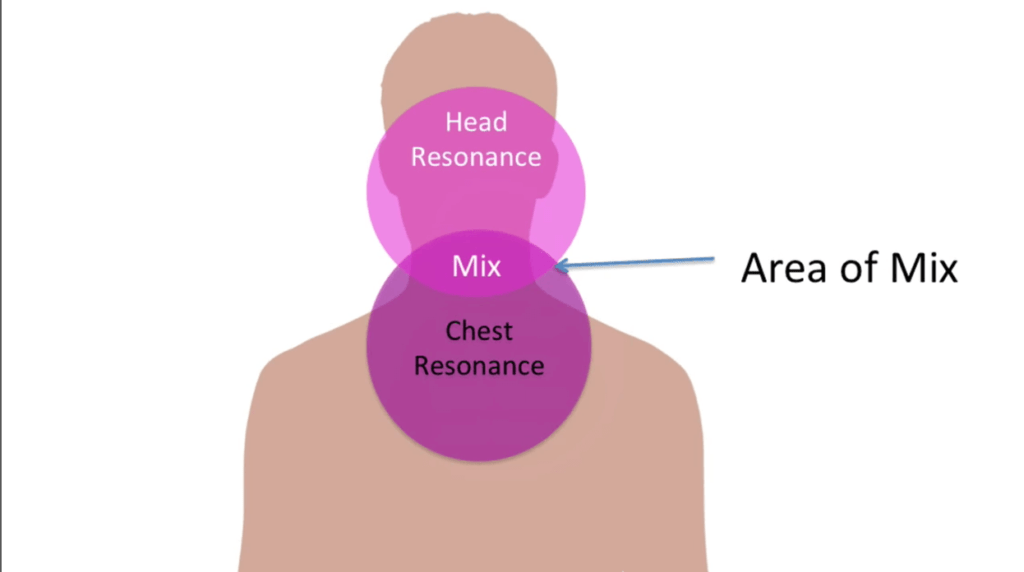
So here’s where SLS comes in:
Speech Level Singing is designed to help singers overcome this break or disconnect. SLS uses exercises designed to allow the voice to keep a consistent “speech-level” sound across the whole range .
The idea is to join the different registers, rather than yell or disconnect to falsetto.
The end result is one unified voice where the registers are so well blended, there’s no break or strain.
Speech Level Singing calls this blending of registers a mix.
While mixing registers, Mr. Riggs believes it is crucial to maintain a resting larynx (voice box).
The larynx is the muscular organ that houses the vocal folds. When an untrained vocalist sings from low to high, the larynx usually rises with the pitch.

But Seth Riggs believes that this rising of the larynx is responsible for the strain and diminished singing quality that ruins voices. So a large part of Speech Level Singing is dedicated to keeping the larynx stable even as the pitch changes .
The Goal of Speech Level Singing
The end goal of Speech Level Singing technique is to allow a singer to balance their registers so well that they have the freedom to sing whatever notes and style of music they want, with no breaks or changes in quality.
In other words, a singer should “mix” from the bottom to the top of their voice.
Seth Riggs once described Speech Level Singing as the refusal to “reach” for a note. Reaching for a note usually means that a singer will hit the note below pitch, or flat .
Here’s Riggs explaining Speech Level Singing technique in 1996:
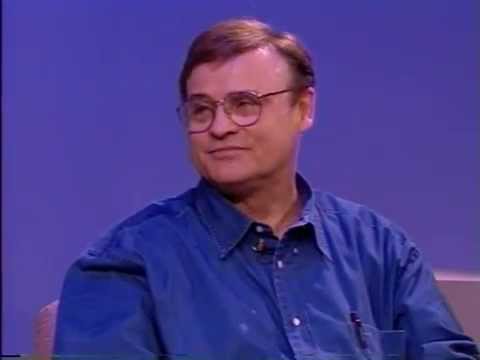
The point is:
Speech Level Singing is designed to help singers hit high notes without straining or disconnecting to falsetto.
This mix is an ideal in SLS, and teachers believe this is desirable in any style of singing.
2. Estill Voice Training
The story of estill.
Estill Voice Training is a vocal technique which was created by Josephine Estill in 1988.
Estill was an American singer, singing voice specialist and voice researcher.
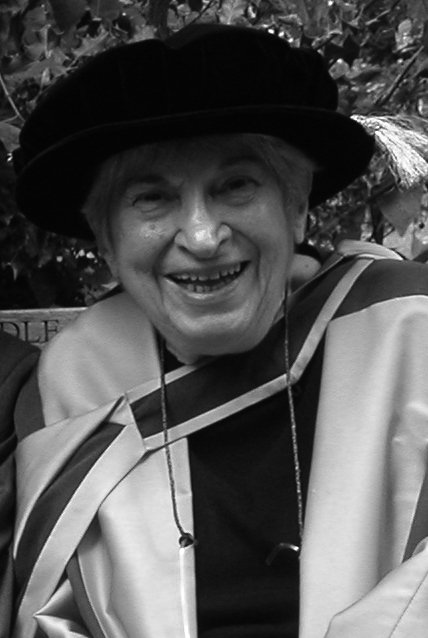
Jo Estill had a long career as a singer. She sang for the radio and as a soloist for 13 years before going on a European tour.
In 1972, Estill became the voice teacher in residence at the Department of Otolaryngology, at the Upstate Medical Center in Syracuse, New York.
Otolaryngology is the brand of medicine that deals with the ears, nose, and throat. If you’ve been to an ENT, you’ve seen an otolaryngologist.
The bottom line is:
Having been a career singer, Jo Estill became fascinated with the science of the voice and began studying singers.
On top of that, Estill was colleagues with some of the best voice researchers in the U.S. at the time. Along with their equipment.
Here’s Estill talking about her love for the science of singing:

Jo Estill was also an early adopter of such procedures as EMG, electroglottography and videostroboscopy. Basically, all of these incredible instruments designed to study output from the voice.
The important thing to remember is:
Many of these instruments allow a scientist to see the vocal folds (or cords) as a person sings.
In fact, here’s a video of me undergoing a videostroboscopy for a look at my vocal folds.

So with the use of these instruments, Estill began to catalog singing into different vocal qualities according to what she saw and heard.
Then she began to systematically create recipes for these different vocal qualities using the parts of the human anatomy which you could directly control.
What is Estill Voice Training?
Estill Voice Training is a system for singing based on deconstructing the process of vocal production into control of specific structures in the vocal mechanism. By being able to consciously move each structure, the singer is better able to control their voice for a desired result.
What the heck does that mean?
Here’s the point:
Estill Voice Training believes that by learning to control the individual structures in our body that control singing, a singer will be able to have full control over their voice.

Want to Nail Those High Notes?
Every singer wants to expand their range. Expand Your Range Fast will show you how to finally hit high notes in your voice without straining. Expand your range by 5 notes or more!

Estill Voice Training believes the reason so many singers have trouble is because the mechanisms that create singing are not under the control of the singer.
In addition to learning to control the different parts of the voice, Estill categorized different kinds of singing into six ideal vocal qualities .
Those vocal qualities are:
Jo Estill researched these vocal qualities exhaustively, noting what each of the structures was doing to create them.
Estill studied many singers, including herself, and listed the 13 vocal figures (or vocal structures) that she believed were essential for creating these vocal qualities.
The vocal figures are:
- True Vocal Folds (Onset/Offset)
- False Vocal Folds
- True Vocal Fold (Body-Cover)
- Thyroid Cartilage
- Cricoid Cartilage
- Aryepiglottic Sphincter
- Head and Neck
Certified instructors of Estill Voice Training will give their students exercises designed to isolate the vocal figures and learn to use them effectively.

The Goal of Estill Voice Training
While you don’t need to panic and memorize all these vocal qualities and vocal figures, the bottom line is this:
The point of Estill Voice Training is to learn to consciously control each of these structures so that you can create whichever voice quality you want.

This means that a singer is aware of and totally in control of their voice at all times.
Additionally, because Estill Voice Training has a foundation in research and science, it’s been used by many speech and language therapists. These professionals have found Estill Voice Training to be valuable for voice therapy as well as singing.
3. Complete Vocal Technique
Cvt: the complete story.
Complete Vocal Technique is a singing technique which was pioneered by Cathrine Sadolin in 1992.
Cathrine Sadolin is a Danish singer and voice researcher from Copenhagen.
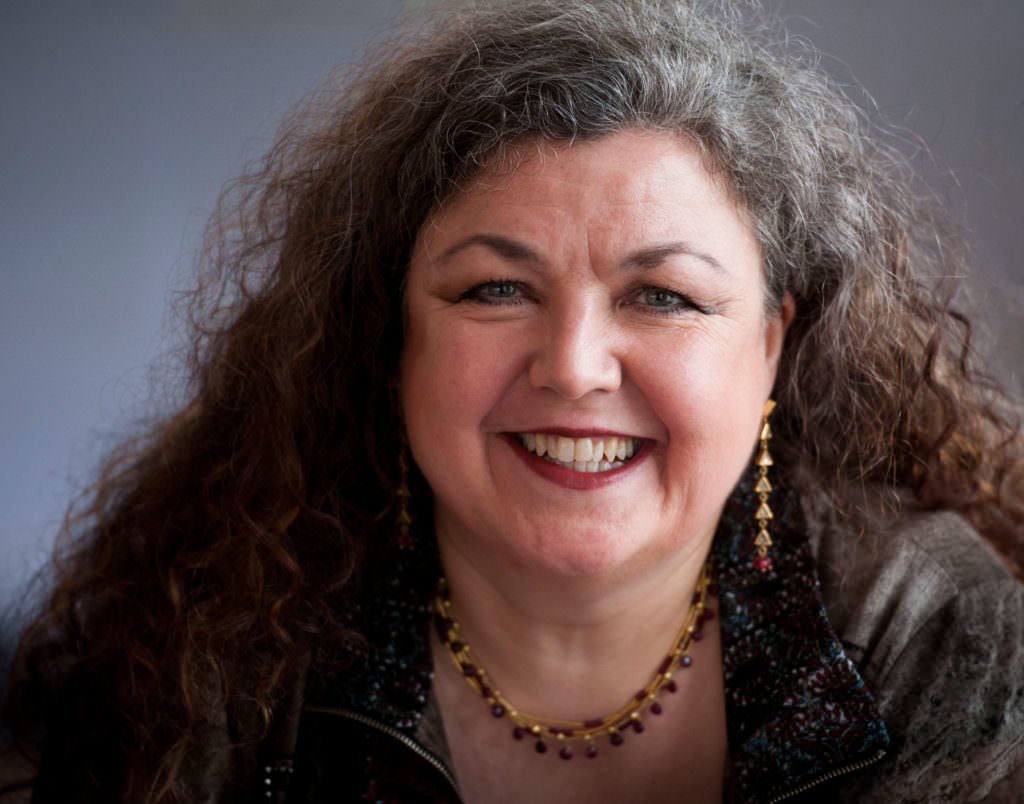
Sadolin was diagnosed with severe asthma as a child and her doctors recommended that she take singing lessons to manage her breathing.
Cathrine Sadolin found the voice lessons to be frustrating due to the conflicting information she got from different instructors.
Eventually, Sadolin decided to “lock herself in her room”, not letting herself out until she understood the voice.
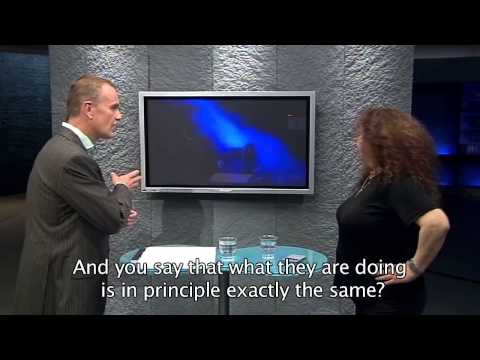
She began researching the anatomy and physiology of the voice, learning to emulate the sounds of her favorite singers. But Sadolin wanted to avoid the confusion she experienced in her own voice training so she set out to create an easy-to-understand vocal technique based on fact.
In 2000, Cathrine Sadolin published the book Complete Vocal Technique .
Complete Vocal Technique established a system for learning vocal technique and in 2005, Sadolin opened the Complete Vocal Institute in Copenhagen. Both professions and non-professionals now attend the Institute for classes.
A teacher training program is also active and many teachers in Europe instruct Complete Vocal Technique.
What is Complete Vocal Technique?
Complete Vocal Technique (CVT) is an international method for teaching voice. CVT is divided four main principles , and by combining parts of these principles singers can produce the sounds they want. This also makes it possible to pinpoint and correct specific problems and errors without having to change the parts the singer are happy with.
What does all that mean? And what are these four main principles?
Here’s the deal:
Complete Vocal Technique believes all sounds are created equal and can be made in a healthy way.
As long as a singer follows a few principles, any sound the singer desires can be made without damage.
The Four Main Principles are the following:
- 3 Overall Principles
- Sound Color
Wait, there are four main principles and three overall principles? What are those?
Here’s a nifty diagram of CVT’s principles:
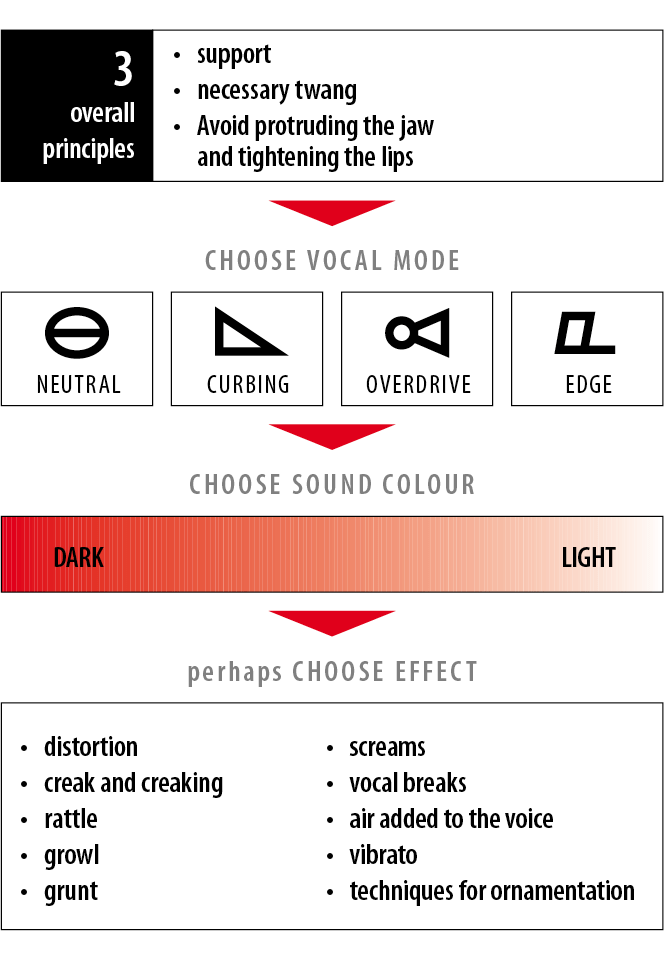
The three overall principles are basically Complete Vocal Technique’s best practices for singing.
The 3 Overall Principles include:
- Necessary twang
- Avoid protruding the jaw and tightening the lips
Support refers to resisting the natural urge to release the air from the lungs while singing. In effect, engaging muscles in the abdomen will allow the singer to resist the air pressure from your lungs. Complete Vocal Technique believes support is essential for hitting high notes .
Necessary twang is basically drawing the vocal folds (or cords) together in order to avoid an overly breathy sound. This is what Speech Level Singing or Estill Voice Training might call a “speech” sound. Rather than a breathy whisper.
Finally, by avoiding pushing out the jaw and tightening the lips , CVT believes the sound will be more free.
Modes, Colors and Effects in CVT
With these principles in mind, Complete Vocal Technique asks the singer to choose between four modes or “gears” in the voice. These modes are bit like vocal effects arranged from the least amount of “metallic” sound in them to the most .
The Four Modes are:
- Neutral – no metal
- Curbing – some metal, may be used in RnB for example
- Overdrive – a full metallic mode, can be used in Rock
- Edge – another full metallic mode, but with a more sharp and screaming character
With the vocal mode chosen, Complete Vocal Technique believes the singer can change the color of their voice from light to dark according to the sound they want to achieve. A singer can change the color of their voice using one of the many different structures in the voice, such as the position of the larynx (voice box) or the shape of the tongue.
Finally, if desired, the singer may choose other effects they wish to use with their voice. A singer may use distortion or a vocal break for example.
CVT instructors will work with their students in order to achieve the most desirable sound according to the student’s taste. Generally, Complete Vocal Technique teachers will help their students find whatever sound they like. The student is the ultimate judge of how they want to sound.
The Goal of Complete Vocal Technique
Complete Vocal Technique aims to help singers create whatever vocal sound the like in a way that preserves the health of the student . According to CVT, as long as the student abides by the four main principles the vocalist will be able to create whatever sound they want without damaging their voice.
The goal of CVT is to help students understand and consciously control all of the artistic tools and sounds at their disposal.
Singing Techniques Compared
When comparing different singing techniques, it can be easy to dismiss a certain idea or term because it sounds silly or foreign. Some singing terms that once sounded foreign no longer seem strange to me.
It’s very important to keep an open mind to all the different techniques and approaches to working with the voice. Each of the vocal techniques we discussed are totally valid and can be useful to anyone.
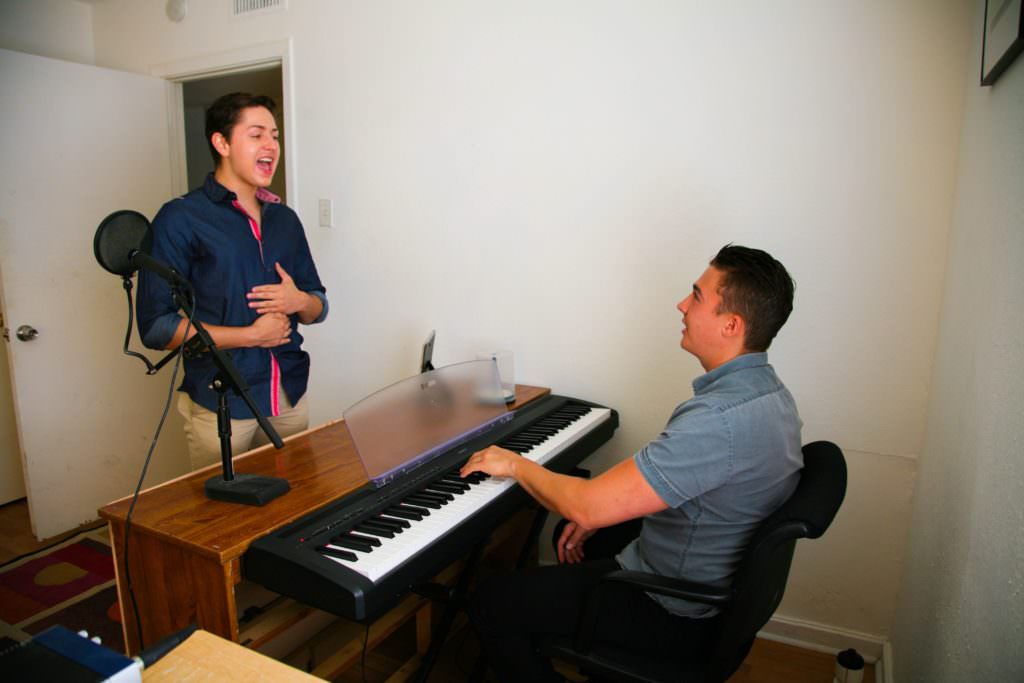
However, some of these techniques are better suited towards a specific student than others.
Singing Technique: How to Choose the Right One for You
Some of the techniques we’ve discussed are fantastic at creating a vocal effect, such as Estill and CVT.
Speech Level Singing, on the other hand strives to create a balanced and consistent sound for the student across the whole range.
SLS places a tremendous emphasis on connecting the registers. Neither Estill Voice Training nor Complete Vocal Technique recognize registers as important.
A vocal break is undesirable in one (SLS), a lack of twang in another (Estill) and a vocal effect in the third (CVT).
Which singing technique is right for you?
What are you looking to accomplish?

Speech Level Singing technique may be a perfect fit for a student who is looking to get the most functionality out of their range and voice . If hitting high notes without falsetto is hard for you, SLS may be a great fit.
Estill Voice Training could be a revelation for vocalists with harmful singing or speaking habits . With Estill’s scientific focus on understanding and isolating the different vocal figures, students may find that by gaining control of their instrument, they have a healthier voice.
Complete Vocal Technique may be a god send for a well functioning singer that is looking for tons of stylistic and performance tools .
The options are endless.

One More Thought About Singing Technique
In the end, the most important aspect of achieving results with singing technique is a positive relationship with your voice teacher . If the relationship between student and teacher is not based on trust and in the student’s best interest, the singer will suffer. It’s worth doing some research on the best voice teachers in your area.
Who wants to take a voice lesson from someone that isn’t grateful to have them?
As teachers, we also have a responsibility to remain educated about the different vocal techniques available and how they can help our students. This may mean helping our students find a teacher who can help them more than we can. If this benefits the student, then we should be grateful.
If you’d like to begin vocal training with Ramsey Voice Studio, consider booking a trial voice lesson .
Related Posts

BUSTED: Ken Tamplin’s 5 Reasons Speech Level Singing (SLS) Doesn’t Work!

The Secret Behind Lady Gaga’s Golden Pipes: Chest Voice
11 comments.
Really? WAIT Really? The ones you’ve mentioned aren’t marketing JARGON today? Where’s the classical/Bel canto technique? I appreciate your hard work putting up this article but you missed the granddaddy of them all .
Hey Nithin, thanks for your comment.
I didn’t cover Bel Canto for two reasons. 1) Bel Canto is kind of a catchall term for all Italian Classical singing instruction in the 17th and 18th century and there was no single technique (unlike SLS, CVT or Estill).
And 2) I wanted to compare today’s singing techniques, not ones that are a few centuries old.
But you’re totally right that SLS takes a lot of inspiration from those old Bel Canto teachers.
Bel canto isn’t one of the most common techniques anymore. Times have moVed on from classical sInging because unless you are singing in the legit classical style it Simply isn’t effective
A balanced and unbiased article, Thank you for putting your time and effort into sharing this Matt. After 20 years of professional singing, I feel the time is right to investigate all of these techniques further.
Wow, thank you Aurora! I appreciate your kind words. Even though I teach SLS, it’s good to understand where everyone’s coming from.
Thanks for this article! I came across it as I was trying to get more information about CVT.
Do you happen to know if any independent scientific reviews have been studied in relation to any of these techniques? What gets me is that the different techniques seem to not just have different philosophies, but slightly different ideas about how the body works to produce tone (unless I’m mistaken in some way). It would be nice to know if any of these techniques have had measurably better results (whether indicated in independent evaluation or even self-report surveys).
I guess nothing is like a great one-on-one teacher, though!
Hey Michael, thanks so much for your comment and question. I’m not aware of any independent studies in relation to the efficacy of the techniques.
In the world of voice, most of the research is done on vocal pathologies and therapies to cure them. But there’s not a whole lot of independent research done on singing itself.
Although it seems like more and more, each of these techniques seem to be doing their own research. Of course, that’s far from independent research and they may just be reinforcing their own opinions.
thanks for the article, well put together AND HELPFUL! i have a question about your statement “a vocal effect is undesirable in CVT” though, could you explain what you mean by that? as far as i know as a cvt student, cvt encourages the use of vocal effects and offers useful tools to produce any sort of sound effect. am i misunderstanding what you want to say? just asking for clarity.
Hey MArtinz, completely agree that CVT teaches the use of vocal effects. What I stated was: “A vocal break is undesirable in one (SLS), a lack of twang in another (Estill) and a vocal effect in the third (CVT)”.
The vocal breaks that are taught in CVT can be viewed as undesirable in SLS and Estill pedagogy. Does that make sense?
Thanks, this is a really helpful overview. I’m considering doing SOME Estill TRAINING, not TO BECOME a specialist but TO improve my understanding of how each COMPONENT of the voice works AND therefore enhance MY teaching toolkit. So helpful to have this CLEAR, neutral look at some of the most prominent proprietary methods AS my understanding of them was, to be honest, superficial.
I’m so glad you found it helpful Geraldine!
Add Comment
Cancel reply.
Your email address will not be published. Required fields are marked *
I accept the Privacy Policy
Copyright 2024 Ramsey Voice | Privacy Policy & Terms of Use .

The Power of Speech Level Singing: A Beginner’s Guide

“We don’t think about how to talk, so why should we think about how to sing?’ says Dave Stroud, at a recent master class on Speech Level Singing.
This anatomical approach to singing was originally developed by Seth Riggs, singing teacher to the stars, to explore what the vocal cords actually do in order to create the desired note.
What is Speech Level Singing?
Speech Level Singing (SLS) is the method created by America’s top voice teacher, Seth Riggs. SLS is used and endorsed by over 100 Grammy Award Winning singers, including Michael Jackson, Stevie Wonder, Michael Bolton, Natalie Cole, Beyonce, Barbara Streisand and many more. SLS allows a singer to sing through their entire range (3 octaves or more) with the same connected, even, strong, flexible sound at any pitch, at any volume, and in any style without strain or superfluous effort. Speech Level Singing eliminates the breaks and allows a singer to sing through their bridges (also called passagi ) with a relaxed larynx, all with the ease of speaking. SLS is a completely safe and healthy way to meet your vocal demands.
So let’s get technical: of course, the bain of every singer’s life is how to create a smooth link from one register to another. These links are known as bridges, or to use the proper Italian term ‘ Passaggio ‘. An experienced singer with the best vocal technique can seemingly glide effortlessly across these bridges without us even hearing the join. But what is the secret?
The trick is to create a ‘mix’ of chest and head voice in order to give the illusion of volume/power. What you are really doing is projecting the voice.
The bottom line is controlling the air (blowing less air) and muscle (larynx). This is done by various exercises which trick the vocal cords into doing the right thing. If you practice for long enough, you’ll soon forget your lifetime bad habits.
Vocal Exercises
Here are some examples of exercises used:
Using a hard consonant such as ‘Gee’ encourages the vocal cords to stay closed.
Never widen the vowel or your mouth, as this creates the wrong shape, therefore not allowing the vocal cords to close/open.
Try singing ‘A’ with your tongue out – this stops air escaping.
Place both hands on either side of your cheeks and push together when singing a vowel.
There are also various ‘distraction’ techniques such as bending your knees or leaning forward when you go for the high note, giving the illusion that it’s not so high after all!
The technique clearly works – as demonstrated by audience participants. Dave’s approachability and enthusiasm for his work add to the fun.
Happy singing! Written by Tamsin Pentreath at Line Hilton
Line Hilton is London’s only registered Speech Level Singing (SLS) teacher. Let me help you find your natural voice, expand your range, eliminate nasty breaks and yodels, and gain consistent strength and balance throughout your voice. Feel confident you will sing your best at all times.
Singing For The Stars
What do Michael Jackson, Anita Baker, Natalie Cole and hundreds of other professionals have in common? They have all studied voice with Hollywood’s leading vocal coach, Seth Riggs. You can learn to sing like the pros with this complete program for training the voice.
Read more on Amazon

SETH & MARGARETA RIGGS
Singing for legends.
Basically, if the larynx stays down and the vocal cords stay together from the very bottom of the vocal range to the very top everything is fine.
This also applies to all vowel and consonant combinations through out any phrase. If at any point the larynx jumps up or down or the tone becomes breathy then there is something wrong with the vocal process.
The larynx is the big bump in the middle of the neck just below the chin. This houses the vocal cords and controls the process of swallowing. When the larynx moves up, the muscles around the cords act as a sphincter and closes so as to prevent swallowing down the windpipe and into the lungs. This is a very important process when you need to swallow, but it is a very poor process when you are trying to sing.
If you place your hand on your larynx and yawn, you will find that you can bring your larynx down as well. This is a good way to learn what it feels like to have the larynx stay down. The end goal here is to be able to keep the larynx from moving down as well as up. It should stay completely still as you ascend and descend.
The vocal cords, also known as vocal folds, are a pair of soft tissue cords that are joined at the front of the larynx and extend back. When they close, the back end of the cords come together (adduct), and the flow of air is temporarily stopped. When the pressure of air from the diaphragm overcomes the pressure of the muscles holding the cords together, they are blown apart and sound is made when they close again due to the resonation created. Then once again the air pressure overcomes the muscle pressure and the process begins again.
If a singer is singing an A above middle C, this process happens 440 times every second. The pitch A above middle C vibrates 440 times per second. That is very fast and it is somewhat difficult to see this process happen even if you can see down the singer’s throat. Since the invention of the strobescopy it has become easier to view the vocal cord resonation process.
If the vocal cords begin to come apart, the tone becomes breathy and the muscles around the outside of the larynx begin to tense. This becomes what is called a constricted phonation and is quite harmful for the voice.
This is a very brief and condensed version of what happens when you sing, there is obviously a lot more going on. But, to give you an idea of what is correct, take these two ideas and while you are singing, monitor them. See if you can keep your larynx still and your cords together. You will probably find that there is a certain area of your voice that is easy for you to accomplish this and certain points of your voice that are more difficult. These harder areas are called bridges, The key to Speech Level Singing is in understanding the bridges and the mix.
Bridges in the voice are passage areas from one part of our vocal range to another. In Italian, they're called passagi - or maybe you've heard the term passagio. These passage areas are a result of vocal cord adjustments that must take place in order for us to sing high and low in our range. These vocal cord adjustments produce resonance shifts in our body.
Our first shift in resonance, or our first bridge, is our most crucial, because this is where our outer muscles are most likely to enter the picture. If they do, they tighten around the larynx in an effort to stretch the cords for the desired pitch.

Text or Call Us: 647-347-7464
How to sing: using speech level singing.
- January 2, 2009
We all want to be able to sing at our best – or else you wouldn’t be reading this blog! The question is, how do we get there in the most efficient and quickest way possible?
But we need to be careful here. We are so used to listening and watching singers at the height of their artistic peak that we don’t see the grueling, deliberate, and often endless amount of hard work that was required to get them there.
Luckily, Seth Riggs, founder of Speech Level Singing has uncovered some remarkable truths about the voice that allow us to capitalize on our voices for the least amount of effort – saving our voices for a lifetime of use. Later, a formal development process based on Mr. Riggs’ findings was pieced together by CEO of SLS Dave Stroud. With this combined approach we can begin to allow our voices to find and stay flexible, adaptable, and over time strengthen it for even the most demanding of vocal tasks. In this way, we can achieve or sustain the kind of vocal freedom we may have either been born with, or have only dreamed about. The rest of this article is a simplified explanation of the Speech Level Singing training process.
In order to get your voice functional the quickest, it is helpful to understand on a broad level how the training process works. Otherwise, you may slow yourself down considerably, or even damage yourself, if you work one aspect of our voice when your focus at that particular time should have been somewhere else. When it comes to voice training, precision is key! Understanding the process can help both the beginning singer, and the most advanced vocalist to uncover the secrets to becoming the best they can be.
At any of the early stages of training, the singer will usually find themselves making some TEMPORARY but possibly extreme sounds in order to establish proper vocal conditioning and a better coordination. This is a crucial part of the process that is unavoidable. Don’t be discouraged – it is only temporary! When the right coordination is achieved, the extreme sounds can be removed and a speech level coordination can begin to take place.
You will notice many significant differences that sets Speech Level Singing apart from other teachers and voice training practices. Most teachers and voice approaches will have their students practice breathing exercises, use a few visualization techniques accompanied with some often bizarre analogies, and then begin to have their students sing songs. Not here. With SLS, the emphasis is laid thick upon developing coordination at the vocal cord level first, which means that you may not get around to singing songs until later in the training process. If you try to jump to singing songs too soon, your mental and physical coordination will not be nearly strong enough to accomplish it with ease correctly, and your habitual tendencies will quickly reemerge and greatly slow or halt your development.
It’s also important to note that the steps are dynamic and interchangeable: as you are challenged by different aspects of your voice, you may find you need to retreat to previous steps in order to achieve the more challenging goal.
And finally, learn to be curious about your voice. Remember: Your own voice is a fascinating instrument (nobody else even has your unique vocal quality!), so remain passionate about the process… Learn to enjoy singing for what it was always meant to be: not for fame or fortune, but for the simple joy of cathartic noise making and sonic self-expression from the heart!
Step 1: Discover To begin, we must first experience your voice in it’s full, extended form: as the “bottom”, or low notes of your voice, and as the “top” or high notes, of your voice. Normally we experience the vibration of low notes as “chest” voice, and as the vibration of high notes as “head voice”.
For most men, the experience of chest is relatively already quite familiar, and it’s the experience of their head voice that is unfamiliar. This often leaves a distinct “break” between head and chest, where the head voice is not blended smoothly into chest, or vice versa. In order to ensure we don’t get “stuck” in chest, getting men to experience their falsetto voice is often the first step in this direction. For women, the reverse is often true… Women are most often unfamiliar with their chest voice when using their voices to sing.
The goal at this stage is simply to familiarize yourself in your singing with not just chest voice, or not just head voice, but to experience both in whatever way possible, even if it going back and forth between the two seems awkward. Female and male singers will begin to become aware of their first “passagi”, first bridge, or their first “break”. It’s important not to get caught solely in either vocal qualities without the other while vocalizing or practicing singing. If you don’t learn to access both, even as separate entities, your range as a singer will be very limited, along with your ability to control the dynamic of the range you do have, and the health and flexibility of the voice will remain in jeopardy.
Singers and specific songs that tend to use both chest and head vocal qualities in a disconnected coordination: Elizabeth Fraser of Cocteau Twins (Ella Megalast Burls Forever), Chris Martin of Coldplay (Clocks).
Step 2: Connect The next phase, generally speaking, is connecting the chest voice to the head voice – that is from the bottom of the range right to the very top so that there are no breaks or cracks anywhere in the extended voice. This could mean developing what was once a falsetto voice, into a blend of chest and head voice.
At this point, the singer learns how to begin to smooth out the first break point in between the chest and head voice. The first break point for most singers will occur almost always in their first bridge. We call this first bridge the “mix voice”, that is the voice that “bridges” the chest voice to the head voice. It is the first of many bridge areas of the voice, and the singer begins to learn how to connect the first bridge, and then the subsequent bridges that follow.
Singers that tend sing in this way: Freddie Mercury of Queen (We Are The Champions), Alicia Keys (Fallin), Chris Cornell (Can’t Change Me), Cold War Kids (Hospital Beds)
Step 3: Release/Balance After establishing a connection in the first transition, the singer must then learn how to release any “reach for pitch” within that area… That is, they must learn how to release any unnecessary musculature outside of the vocal cords, as the ascend from pure chest into a blend of chest and head within the first transition. This process may repeat for the 2nd, 3rd, 4th and so on, bridges areas of the voice until the whole instrument is connected and balanced.
If you haven’t done so previously, you will find a big emphasis at this stage on NOT struggling. This can often be one of the most challenging parts of the training process, but it builds within the singer a remarkable amount of versatility, skill, and will provide a means for the vocalist to sustain singing in a healthy production, hopefully, for the rest of their lives. It is often the most exciting step as the singer may finally learn to tap into the freedom inherent in their voice.
A singer that sings with pronounced “release” in her voice: Anita Baker (Sweet Love)
Step 4: Build When the singer has learned to release their voice on higher pitches, it is time to strengthen it as much as possible. It is at this point that the arc of development can begin to allow for “normal” sounds in training.
Singers and their songs in this way: Whitney Houston early in her career (So Emotional), Pavarotti (Nessun Dorma), Christina Aguilera (The Voice Within), Wendy Moten (Come In Out Of The Rain), Javier (A Song For Your Tears), Aretha Franklin (I Say A Little Prayer).
Step 5: Speech Level At this point, all extreme sounds are eliminated, and a speech level coordination is established and strengthened.
Singers that sing in this way include: Mariah Carey on older albums (Hero), Stevie Wonder (Lately), Ella Fitzgerald, Sarah Vaughn, Luther Vandross, Harriet Wheeler from The Sundays (Summertime), Anthony Warlow (Bring Him Home).
Step 6: Song Application The singer learns to apply their technique into the songs they love to sing!
Step 7: Style The singer begins to explore what excites them the most about the singers they love, and about the qualities that make their own voice unique…
Featured Post:
Toronto's best music schools, recent blog posts.
Check out our new posts below!
What Are the Pedals on a Piano For?
How to practice with a metronome, the best books for learning jazz guitar, a dictionary of advanced and extended piano techniques, call us today to connect with a top music teacher in toronto, 647-347-7464, toronto downtown location:.
- 19 Isabella Street, Toronto, ON M4Y 1M7
Toronto Midtown Location:
- 386 Eglinton Ave W, Toronto, ON M5N 1A2, Canada
Music Lessons
- Academy Highlights
- Current Students
- Privacy Policy
- Singing Lessons
- Piano Lessons
- Guitar Lessons
- Group Classes
- Managing COVID-19
- Online Singing Lessons
Toronto Music Teachers
- Toronto Voice Teachers
- Midtown Voice Teachers
- Forest Hill Voice Teachers
- Downtown Voice Teachers
- Yonge & Eglinton Voice Teachers
Copyright ©2024 Singer's Edge. All rights reserved.

IMAGES
VIDEO